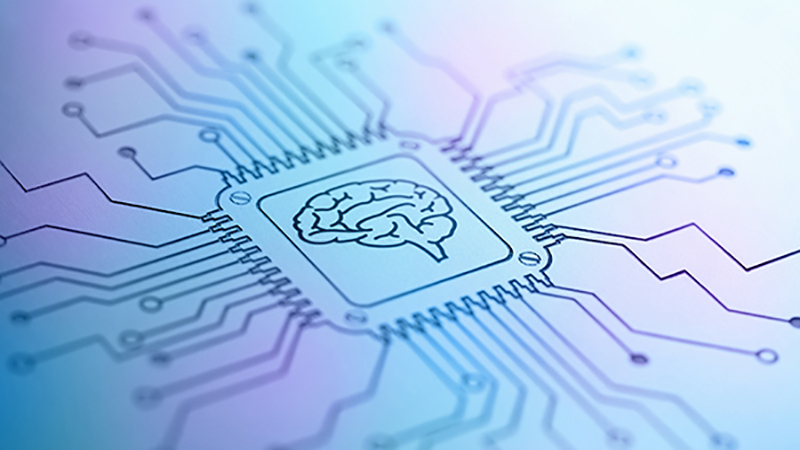By Jonathan Rawicz, senior portfolio manager of the New Capital Global Equity Conviction fund
Technological developments have impacted many aspects of our lives over the last 50 years – and Artificial Intelligence (AI) is set to become the latest game changer for society.
AI looks likely to be revolutionary in lowering the cost of creating content like the cost of duplicating content was massively lowered by the printing press, PCs and smartphones, and the cost of distribution was significantly lowered by the move from newspapers and books to e-books and online news.
AI will likely create as much value as the tech revolutions before it.
Currently, we are at the very early stages of the AI revolution and as with new technological changes, lower cost and profitability driven by increases in scale takes a while to achieve. The availability and price of high-end graphics processing units (GPUs) needed to run AI models remains high but will likely reduce as demand matches the increase in investment in the capacity to produce them.
There are two main areas of AI – machine learning AI, which involves data analysis and statistics prediction; and generative AI, which focuses on producing text, images, music, video, synthetic speech and even computer code.
AI can be a vital tool on two fronts. The first is impacting businesses – by accelerating innovation, and by reducing costs and complexity through cheaper content and better analytics. ,
It is also improving the lives of consumers by offering more digital content, personalised health treatments, and even the development of autonomous vehicles.
While AI remains nascent, the possibilities for adoption across almost all sectors will likely come in time. To our minds, investors wishing to be part of the AI journey should be looking at three layers of growth – hardware, infrastructure and applications.
- Hardware
As AI is adopted, more and more investment will go in the hardware technology that underpins AI.
Any company that makes GPUs, the computer chips that are required by AI, are set to benefit from increasing demand.
This is what has driven some global chip makers’ share prices to heights this year, with some rising by as much as 200% in a year.
Other hardware suppliers that make the equipment required to manufacture these GPUs as well as companies that manufacture them are all going to benefit over time.
This includes providers of semiconductor equipment and fabricators, as well as networking equipment.
- Infrastructure
The infrastructure layer is formed of companies buying equipment to run AI models such as big cloud platforms.
There has been a structural change in where computation is done over the decades. It’s not happening in the server rooms of companies anymore – it’s happening at Google, Amazon and Microsoft data centres over the internet. And that is where AI is going to run too.
As a result, these tech-focused companies will be investing in the appropriate infrastructure on a mass scale over the coming years in order to facilitate the development of AI applications.
They are not alone. Other infrastructure companies like cloud database businesses, data processing and management platforms, and companies that develop large language AI models will also profit from the rise of AI, as adoption gains pace.
They will all be vital in the growth of AI development – and companies involved in the development and usage of this infrastructure should expect growth.
- Applications
What is still emerging are AI-based apps. Who is going to build successful AI-based applications and products? This is a key question we are trying to answer. We believe that this is where the largest undiscovered opportunity remains.
There are many companies very well positioned to utilise AI; such as Microsoft with Co-Pilot, Google with search engine Bard and Amazon with Alexa. But we may also see the launch of start-ups that could look to crack into the space.
Companies with huge volumes of data will likely be the growth stories of the surge in AI. They will be looking to see how they can create AI applications – and they will be the first to generate value from AI.
For example, credit scoring and fraud detection businesses could be well positioned to potentially have some success in the future. AI could be used by these companies to help service banks and insurers in underwriting contracts to more accurately price policies or with the loan approval process.
Furthermore, AI-based applications could be important in a world that may de-globalise. The more Western countries look to adopt the higher-cost strategy of manufacturing products closer to home, there may be a need to lower costs by using AI to automate production.
This could be by using simple applications like cameras on a production line to help eliminate costs of recall or product failures.
Selectivity is key
While exciting investment opportunities will abound in AI, one needs to be very selective and in-depth research is essential.
Some investors will remember the dotcom bubble in 2000, which saw a great deal of over investment at the start of the internet craze.
The mass adoption of the internet clearly materialised, but it took a while for its full potential and monetization to begin.
As an investor, the challenge is working out which ideas will add value and which ones will commercialise today. For every Amazon, there are many Pets.coms.










